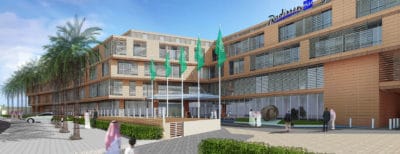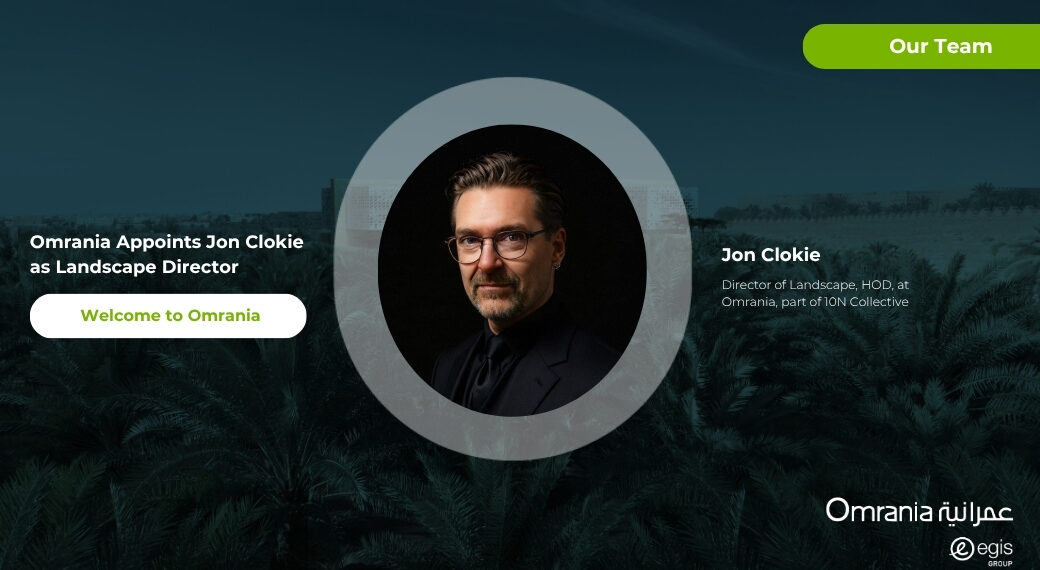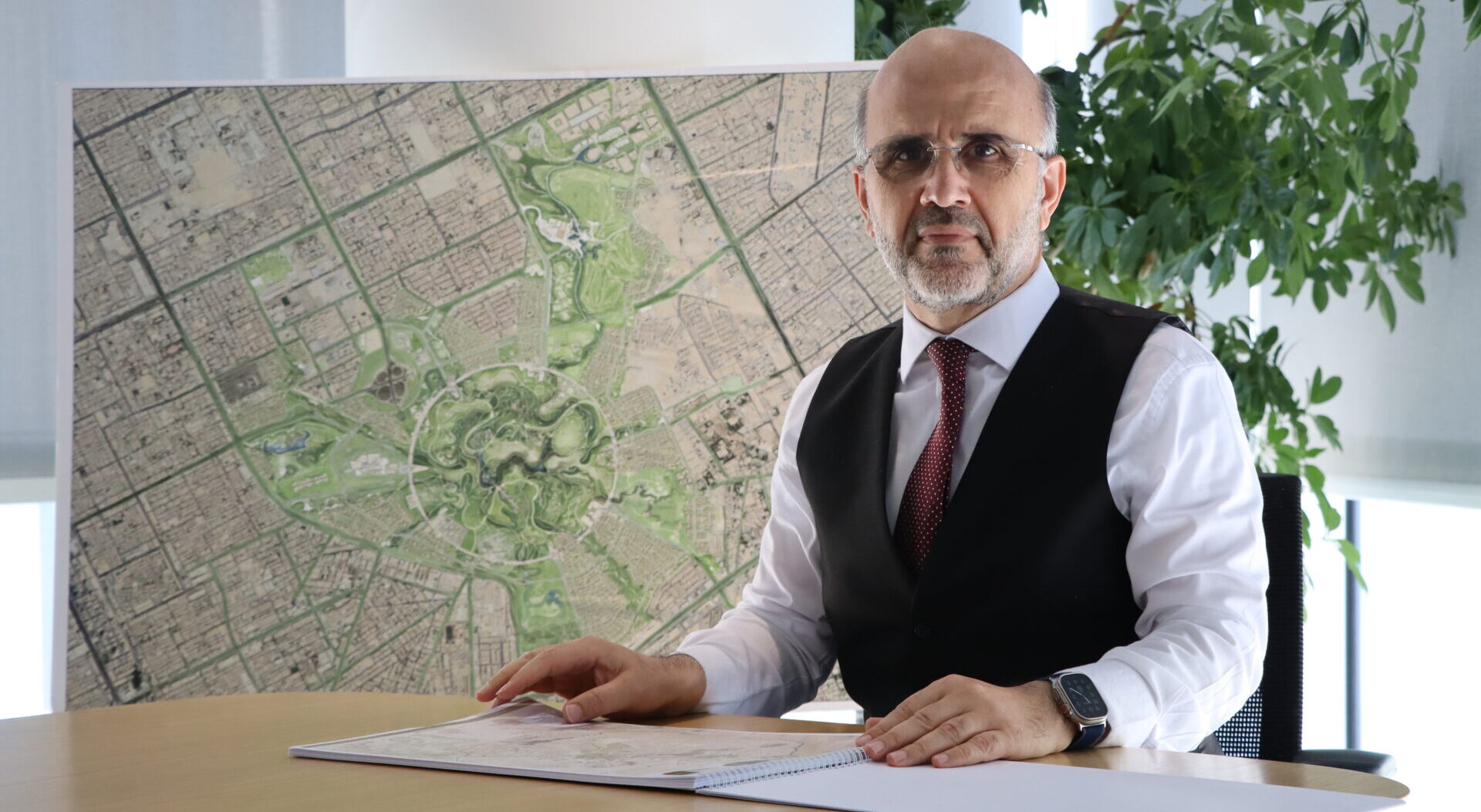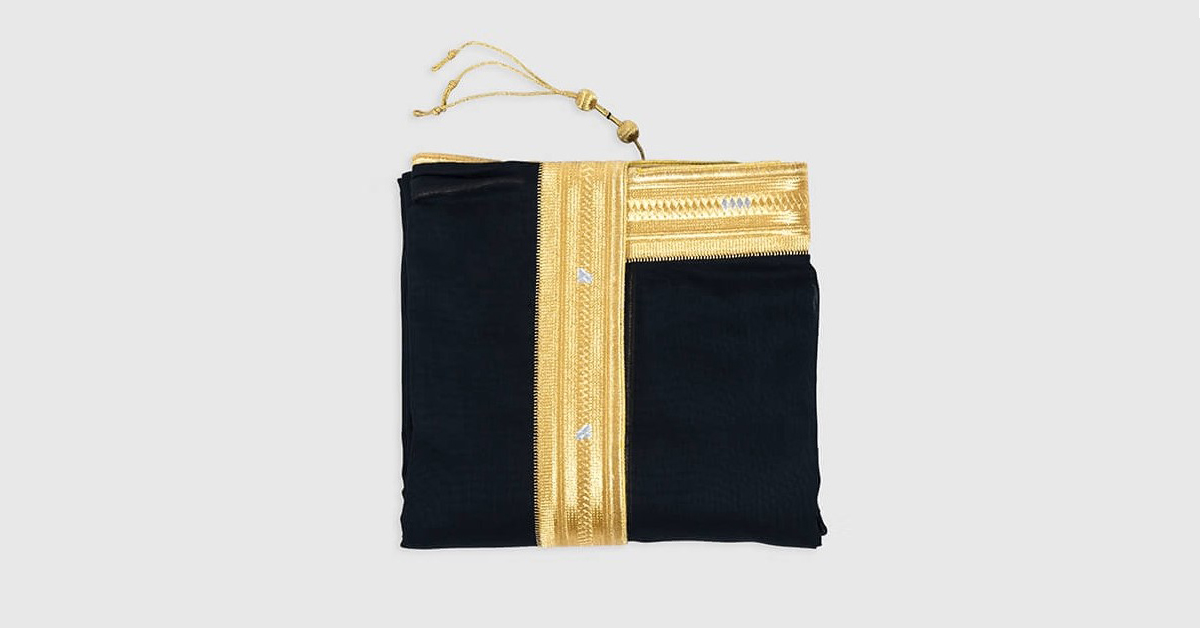
.
Omrania designs a unique sculptural installation at entrance of Radisson Blu Hotel, expressing the concept of infinity and respect for local culture.
Art and architecture have long enhanced one another. When Omrania was commissioned to design the Radisson Blu Hotel & Residences in Riyadh’s Diplomatic Quarter, the design concept called for incorporating a variety of works by Saudi and Middle Eastern artists and artisans.
This emphasis on art and culture meshed with the overall vision of a building in harmony with its environment. The recently opened hotel and residential development features a number of sustainable design features and innovative building techniques as well as uniquely contemporary interiors.
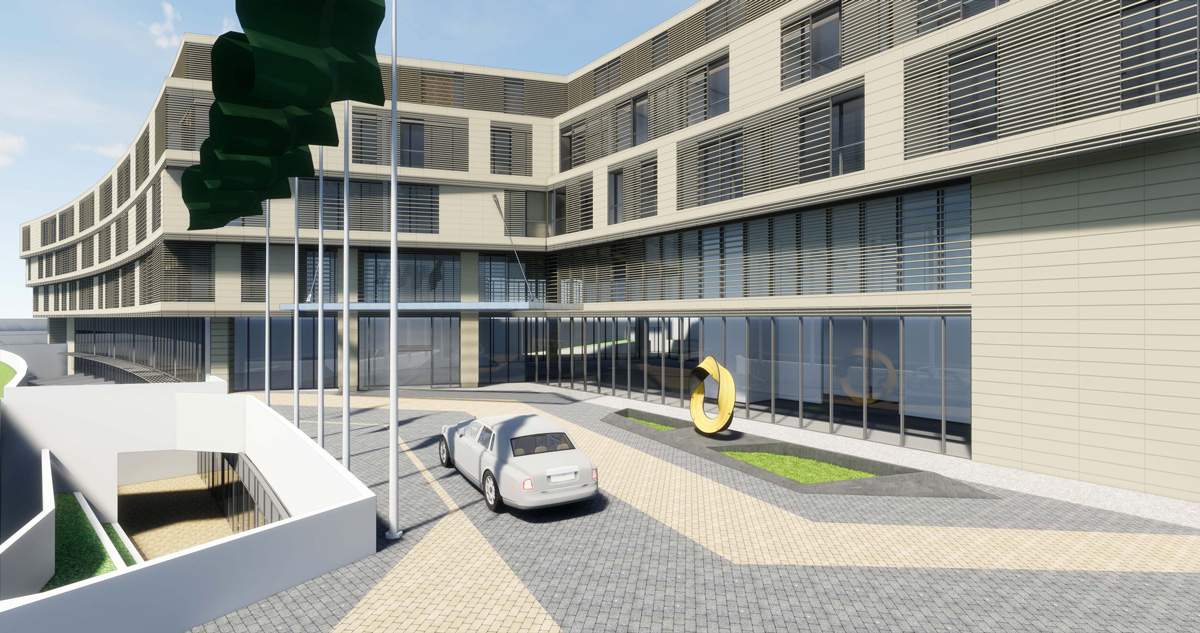
Entrance of Radisson Blu Hotel, DQ, Riyadh, Saudi Arabia. Photo © Omrania
Omrania was honored to be selected to contribute an artwork alongside the many artists and artisans whose works are featured in the hotel. Extending the synthesis of art and architecture to the exterior of the building, Omrania designed a freestanding cast bronze sculpture that stands outside the hotel’s main entrance in a gesture of welcome.
This distinctive artwork, called “Mashlah,” is inspired by our culture and identity. Its textured and patterned metal surface evokes the embroidered fabric trim of the mashslah, the traditional men’s cloak also known as mishlah or bisht. This flowing garment has for centuries been associated with Arabia —a fitting metaphor for the warm welcome bestowed on guests as they arrive from outside or inside the Kingdom.
Formally, the design takes the form of a Möbius Strip, which is recognized in mathematics and engineering sciences as a continuous or endless loop. It recalls the embellished textile details of a high-quality mashlah, but with a twist: enlarged to the scale of architecture rather than clothing, the geometrically embellished surface becomes a freestanding sculpture that traces a theoretically infinite loop. Metaphorically, this form signifies the timeless dignity of local culture.
This artwork was not produced by a single person, but rather an inspired team of Saudi architects who developed the work over a series of workshops. Ultimately their many ideas and models crystallized around the idea of cultural authenticity and continuity.
The design development and fabrication of “Mashlah” was facilitated by the use of advanced 3D visualization and modeling software. The digitally modeled form was first cast in plaster, which was used to create a plaster mold. The final bronze artwork was then cast in the plaster mold. Evoking the shimmer of golden threads, the work has a natural patina that will endure for generations to come. The work is contemporary in its expression, yet traditional in its theme—paying homage to centuries of fine craftsmanship and the importance of culture.






















